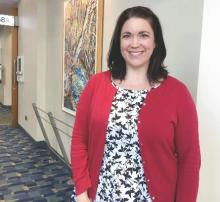As the U.S. Supreme Court is poised to decide the fate of a set of abortion regulations in Texas, some ob.gyns. are pointing out the negative public health consequences of restricting access to the procedure.
In the case of Whole Woman’s Health v. Hellerstedt – likely to be decided by the Supreme Court in June – the justices must weigh whether Texas officials are placing an undue burden on a woman’s ability to access abortion by levying regulations on abortion providers and facilities. The court heard oral arguments on the case on March 2.
The regulations, enacted in 2013, require facilities that provide abortions – both surgical and medical – to meet the standards of ambulatory surgical centers. The Texas regulations also require abortion providers to have admitting privileges at a hospital within 30 miles of their clinic.
Texas health officials and abortion opponents call the regulations common sense safety measures to protect women’s health. But the American College of Obstetricians and Gynecologists and other medical groups object to the restrictions on the practice of medicine and refer to them as targeted regulation of abortion provider or TRAP laws.
“They seem very reasonable to the public, I think, and also to legislators,” Dr. Diane Horvath-Cosper, an ob.gyn. and abortion provider in Washington, said at the ACOG annual meeting. But “they’re not medically necessary. In fact, not only are they not medically necessary, they’re harmful in that they result in the closure of numerous clinics. They put a lot of doctors and nurses and good people out of this business and [cause] really restricted access. We’re just now understanding how much that is the case.”
Dr. Horvath-Cosper conducted a scientific and legal analysis of the so-called TRAP laws and concluded that they increase the risks of travel, abortion at later gestational ages, the possibility of being denied abortion entirely, and could possibly lead to the resurgence of illegal abortions.
As of March 2016, 24 states had laws or policies that fit the definition of a TRAP law and applied to all clinics in their state providing surgical abortion, according to the Guttmacher Institute. But Texas, whose far-reaching regulations are being reviewed by the Supreme Court, has become the embodiment of the push to adopt TRAP laws.
In Texas, TRAP laws have contributed to closing about three-quarters of the abortion-providing facilities in the state, Dr. Horvath-Cosper said. Since Texas is so large, this leaves many areas without any access to abortion services.
Those closures have had a trickle-down effect, shutting off access to some family planning services and cancer screening programs that are required to be delivered through certified facilities, many of which were clinics providing abortions. With the closure of those clinics, many women – typically minority and low-income women – are now having difficulty accessing basic health care services, Dr. Horvath-Cosper said.
“This is already a marginalized group of women who already have disparate health outcomes,” she said.
The closure of these clinics is also prompting women to drive greater distances for abortion services, frequently into neighboring states, Dr. Horvath-Cosper said. “They may be actually eclipsing the risk of the procedure with the mileage on their car,” she said. “So if you drive 758 highway miles, you hit the risk of mortality for legal, induced abortion.”
Dr. Neha Bhardwaj, an ob.gyn. at the University of New Mexico, Albuquerque, said she has seen many Texas women who come to Albuquerque seeking an abortion.
“I am not originally from New Mexico, so when I moved there 2 years ago what I started seeing was an increase in patients that weren’t from New Mexico, that were from Texas and other surrounding states,” she said at the ACOG annual meeting.
The observation prompted her to look at the data. She compared clinic visits at the University of New Mexico, Albuquerque, from 2011 to 2012 and from 2014 to 2015; Texas women seeking abortion services increased 400% between the two time periods.
Later this year, she hopes to complete a larger study looking at additional abortion clinics in New Mexico to quantify the increase in women traveling from Texas to obtain abortions.
Another health concern resulting from lack of legal abortion access is women seeking to self-abort.
“People are going to Mexico to buy drugs – which may or may not be real drugs – or they are using things in their home,” Dr. Horvath-Cosper said. “We’re getting calls at clinics across the country that women are saying, ‘I have these things in my kitchen cabinet, what can I do to have an abortion.’”



